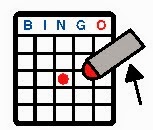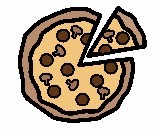 October is here and it is one of our favorite months. Outside, Fall is starting to look quite spectacular, we're feeling those cooler nights that are just right for snuggling under a blanket and, October is AAC Awareness month! Let's share our passion for AAC. Spread the word and encourage others to explore activities that can open up the world of communication. This month we are sharing resources, ideas and words of inspiration, all related to sharing our message: AAC rocks!
October is here and it is one of our favorite months. Outside, Fall is starting to look quite spectacular, we're feeling those cooler nights that are just right for snuggling under a blanket and, October is AAC Awareness month! Let's share our passion for AAC. Spread the word and encourage others to explore activities that can open up the world of communication. This month we are sharing resources, ideas and words of inspiration, all related to sharing our message: AAC rocks! Sometimes you just have to try it...
We often encourage others to try using a communication display or speech generating device, for all kinds of reasons. Those of us who are used to opening our mouths and letting the words come effortlessly can be brought to an abrupt halt when given a device to try. "How do I turn this on?", "I don't know where any of the vocabulary is", "It takes a long time to say something with this device".
 Trying out an AAC strategy for even a few minutes can be eye opening and helps us all to understand a little bit more about how we can support our students who rely on these strategies every day.
Trying out an AAC strategy for even a few minutes can be eye opening and helps us all to understand a little bit more about how we can support our students who rely on these strategies every day.Here are some ideas for activities for friends, family, the classroom and beyond!
In the classroom, there are lots of different activities that can allow everyone to learn about symbols, practice finding their locations and putting them together to make phrases and sentences. A couple of examples...
Core Word Bingo
Help students learn the locations of the core words on boards that are used in the classroom. Bingo games are quick and easy to set up, and can be played over and over. Make laminated copies of the core boards, with individual symbol cards for matching the called bingo item.You can find an example of a Core Word Board that we've used before in Boardmaker Share.
Making pizza
Everyone gets to choose what to put on their pizza when using their individual communication board. Create a masterpiece paper pizza or take it into the kitchen and make the real thing! You can find an example of a Pizza Activity that we've used before in Boardmaker.
 Pull up a chair...
Pull up a chair...In the classroom, provide everyone with a symbol based place-mat and chat while you chew!
Come on in, grab a board!
Have extra laminated communication displays available just inside the doorway of your classroom. Encourage your guests, other teachers, and the Principal to grab a board when they come in to see what's happening in your classroom and encourage them to give it a try. Peers or buddies are often very interested in trying to use communication displays.
AAC Awareness sessions for TVCC Augmentative Communication Service clients
If your child or student currently receives services from ACS at TVCC, you can talk to your SLP or OT to arrange an AAC Awareness session in the classroom. Clinicians will customize the content for the grade level of the student who uses AAC and will bring along activities for students to practice what they have learned during the session. Just give your clinician a call to set a date.
Quiet coffee
A great way to encourage family members, school staff, grandparents groups and others to think about what's involved in using a symbol board, quick messaging device or more robust speech generating device in order to get their morning brew! Start this month's staff meeting with a 'quiet coffee'. You provide the coffee, snacks, and the experience. You can find an example of a Coffee Board to use in Boardmaker.
Talking with your mouth full...
 Trying
out some AAC strategies over a coffee is a great start. Why not make it
more of an experience and extend it over lunch? Go to a
local restaurant with a group of friends or colleagues and find out
what it's like to use AAC in the community. Share some resources and help others understand how they can communicate more effectively
with individuals who use AAC.
Trying
out some AAC strategies over a coffee is a great start. Why not make it
more of an experience and extend it over lunch? Go to a
local restaurant with a group of friends or colleagues and find out
what it's like to use AAC in the community. Share some resources and help others understand how they can communicate more effectively
with individuals who use AAC.Make a day of it...
For those of us who use speech, keeping quiet for 15 minutes over a coffee break can be challenging. Using a communication display, facial expression and gestures to get what we need at lunchtime can be eye-opening. How about taking it to the next level, and trying to communicate using only AAC strategies for 24 hours?
In 2013, Ann McKenzie (Communicative Disorders Assistant from Children's Treatment Centre of Chatham Kent) did just that. Ann took on the challenge of communicating only through gestures, writing and using an augmentative device, to get a better understanding of the struggles non-verbal children have when communicating with others on a daily basis.
So? How did it feel?
You tried using the personal communication symbol board. You ordered lunch with a Tobii, using your eyes to select the words. You played Snakes and Ladders using an iPad with a head pointer. How did it feel? What did you find out? Maybe something like this......
"I didn't know how to turn the device on"
Our students need to take ownership of their AAC systems. They need their systems to be reliable, available when they have something that they want to say (which could be any time at all) and ready to go when they are.We can help our students by showing them how to turn on their device when they want to talk, or by giving them a way to indicate when they need their AAC system.
"I just didn't know where to find the words I needed"
It really is just like learning a new language. You need help to learn what those symbols represent (especially if someone took the written word away from the top of the symbol!). You need to know which words are stored on your device and where to go to find them. You need strategies to let people know when they haven't understood your message. Or, when you haven't got quite the right word to say what you wanted. It takes time, practice and learning.
"The words I needed weren't on the device"
Perhaps you were able to use a strategy to get your point across. Apple = green fruit, good. Cabbage = green vegetable, bad. Or maybe you just got frustrated and went straight to your spelling page. Fortunately for you, you have great spelling skills and can easily point to those letters. Our students may be relying just on the symbol set in front of them.
"Using your eyes is really tiring"
Some of our kids make using eye gaze look really easy. It's not. Trust me. It's hard on your eyes and makes you crazy! You just have to try it to find out for yourself.
"I was kind of embarrassed to use the device in the restaurant"
Many of our students, particularly teens, are keenly aware that you may look a little different when you use something other than your voice to communicate. For some, device acceptance may take time.
"It was too hard. So I just stayed quiet."
It is hard. Particularly when you are just starting out. And that is why we all need a little help now and again.
Join #AACfamily Friday with the Neider family! Check out the Uncommon Sense blog entry that swells with pride to be a part of such a special AAC family. Celebrate International AAC Awareness Month with them as they post a month of daily AAC related posts. Share your photographs and check back again every Friday in October to help spread the word with Maya and her family.
Help shape the future of AAC...
Ted Talks bring us unique viewpoints and compelling stories on a wide variety of different topics. Here's a wonderful talk related to changing the face, or rather voice, of speech generating technology as we know it.
"Many of those with severe speech disorders use a computerized device to communicate. Yet they choose between only a few voice options. That's why Stephen Hawking has an American accent, and why many people end up with the same voice, often to incongruous effect. Speech scientist Rupal Patel wanted to do something about this, and in this wonderful talk she shares her work to engineer unique voices for the voiceless." If you are interested in being part of this amazing initiative, find more information here: The Human Voicebank Initiative





